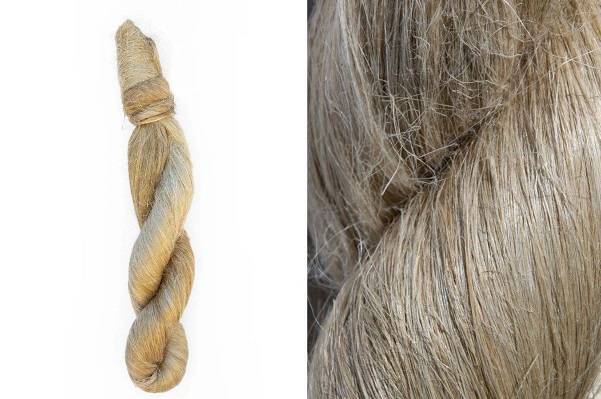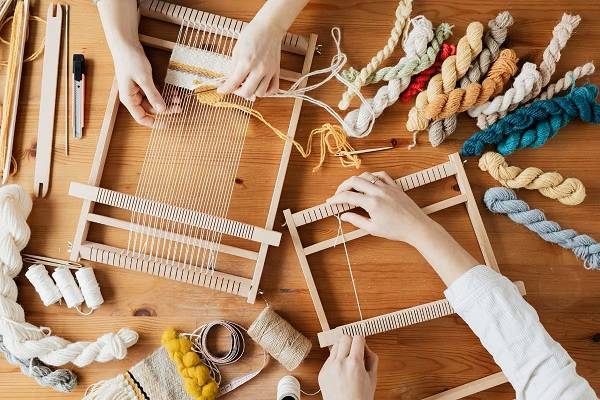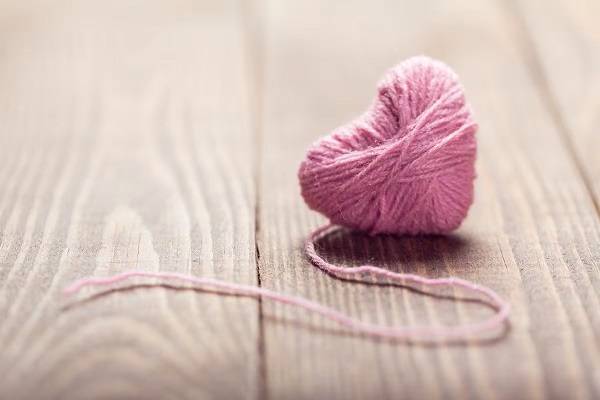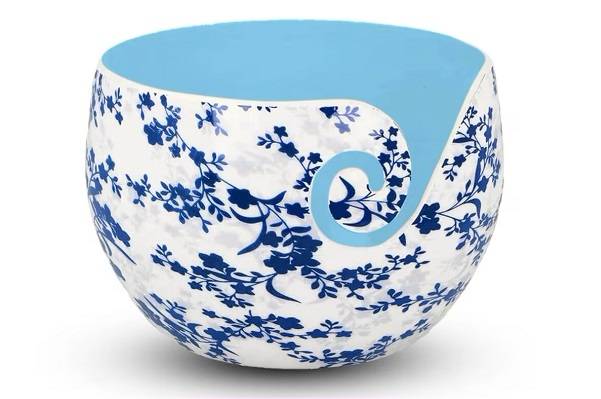Best Spinning Wool Alternative: Why Flax Linen Strick Deserves a Spot on Your Wheel or Drop Spindle
Exploring Plant-Based Spinning Materials for Crafters Who Care About Tradition & Sustainability

Innovation & Quality
Developing and supplying premium-quality, sustainably grown, consumer products
100% Natural
Organically Grown and Ethically Sourced
hemp and other natural fiber products
Shipping
We offer fast shipping
Your order out within 1-3 days
Wholesale
Visit our wholesale portal to register or login to your account
Although wool is the first thing that comes to mind when you think about the world of spinning, because it’s popular for its warmth, ease of use, and flexibility, it’s far from being the only fiber option. If you are a crafter who is sensitive to animal fibers, or is seeking more eco-friendly options, you’ll be glad to know that there’s a wide range of plant-based alternatives to spinning wool. They are making a strong come back and one of the most exciting choices is certainly linen strick, a strong and beautiful traditional fiber that gives you a world of opportunities to express your creativity.
Let’s untangle the story!
Shop Plant-Based Spinning Fibers at Hemptique
Hemptique is a California-based company manufacturing eco-friendly, natural fiber goods for creative makers. Our product line includes plant based spinning fibers that reflect our strong commitment to sustainable living. Our latest product, High grade flax (linen) strick, represents that same beliefs. Carefully sourced from highest-quality flax plants, our linen strick is soft on hands, yet strong enough to endure continuous wear and tear. We work with consumers, small businesses, art galleries, workshops, art and supply stores, craft and hobby shops, schools, stationery and gift stores, and all other businesses and organizations who need craft supplies. For more information on how you can save money if you order in bulk, or how to become our wholesaler, give us a call on (760) 602 – 4864 ext. 402 and 405.
What is Spinning?
Hand spinning is the ancient technique of drawing out and twisting fibers together to form yarn. It’s the act of transforming raw material into functional longer strands, ultimately creating beautiful cordage that can be used for crocheting, weaving, knitting, macrame, etc. This crafts links you to all those generations of hand-spinners who came before us. By blending skill and rhythm you can create unique pieces such as textured shawls, scarves, hats, mittens, garments and home decorations.
A Brief History of Spinning Fibers
Before the invention of industrial spinning machines, for thousands of years people spun by hand using fibers found near them. The oldest twisted fiber was found in southern France, around 50,000 - 40,000 BCE. In colder climates, sheep’s wool was the most popular because wool helps keep you warm. In warmer climates, lightweight, plant-based fibers ruled. In ancient Egypt people wove linen thousands of years ago, while hemp and nettle date back even further.
Types of Spinning Fibers
We can divided spinning materials into two large groups – those that are sourced from animals and those that are sourced from plants.
Animal-based fibers
These fibers are made from protein and are very strong; however, they raise environmental and ethical concerns, so many crafters turn to plant-based alternatives.
Wool is the most commonly used material, but there are fibers from other animals, too. Here are some varieties:
Wool is the most commonly used material, but there are fibers from other animals, too. Here are some varieties:
- Sheep wool – This is by far the most popular type of wool. There are lots of varieties, but the most popular are merino wool and Corriedale wool – they’re elastic, soft, and dye easily.
- Mohair – Sourced from the Angora goat, known for its natural shine.
- Alpaca – Soft, warm, and strong fiber, obtained from Alpaca, a camelid mammal from South America.
- Angora – Fluffy, light and warm, Angora wool is harvested from various breeds of Angora rabbits several times a year.
- Cashmere – Remarkably soft and delicate, but also very expensive material.
- Silk – Technically, silk is protein-based because it’s made by silkworms.
Plant-based fibers
Plant-based fibers are made from cellulose, often found in the stalks, leaves, or seeds of plants. They tend to have less elasticity than wool but offer unique qualities and rich textures.
- Cotton –Suitable for novice crafters – easy to find, soft, and breathable.
- Hemp – Very strong and durable, ideal for items that will be under tension.
- Flax/Linen – Smooth feel, even surface, and natural gloss.
- Ramie – Similar to linen, but more polished and silkier feel.
- Nettle – Remarkably soft and eco-friendly.

Comparison of plant-based materials
Each fiber has its peculiarity. For instance, higher twist and a slightly damp spin are preferred for flax fiber, while hemp is best spun using a long-draw technique.
| Fiber Type | Texture | Difficulty Level | Strength | Best For |
|---|---|---|---|---|
| Cotton | Soft, smooth, lightweight, plush | Easy | Medium | Baby items, summer garments, home décor |
| Linen strick | Smooth, glossy | Moderate | High | Home goods, lightweight clothes, jewlery |
| Hemp | Coarse (softens with each wash) | Moderate | High | Bags, clothing, home décor, coasters |
| Ramie | Slight luster & texture, good drape | Moderate to hard | High | Home furnishings, decorative pieces, weaving |
| Nettle | Moderately stiff, smooth, and shiny | Moderate | Medium | Eco-friendly accessories, ropes, twine, weaving, crocheting |
How to Choose the Right Fiber for Your Spinning Project
Before you buy fiber for spinning, ask yourself a few questions and try to sample a small batch to see how it feels in your hand.
- Will the item be worn or used? For instance, cotton is great for lightweight clothes, while linen is good for both durable household items and garments.
- Are you making a structured item or something that need drape? – Cotton is better for draping, while linen and hemp are suitable for structured products.
Do you want a delicate or rustic look? – Choose coarser fiber like hemp for rustic look, and linen or cotton for a more refined look.
Are you a beginner or advanced spinner? – Cotton is more forgiving for beginners, while mastering other fibers may require some practice.
Wool Alternatives: Tips for Beginners
Spinning fibers obtained from plants is slightly different from spinning wool. Here’s a few tips on how to make your crafting experience a bit smoother:
- Use slightly damp strick – Linen is easier to handle when it’s slightly moist.
- Spin a higher twist – Cellulose doesn’t hold as well as wool, so spin the strick with more turns to create a stronger yarn.
- Draw longer lengths – Long draw technique involves drafting longer sections from the strick to create a stronger and more even yarn.
- Take your time – Don’t rush while working. Slow spinning is most rewarding when working with plant-based materials.
- “Soak and snap” – Soak yarn skeins in water and gently manipulate by hands (“snapping”) to set and even out the twists. This technique also helps create more volume (“bloom the yarn”).
What is Linen Strick & Why it’s so Special
Linen strick is a bundle of long and lustrous combed flax fibers, ready for spinning. Premium products, such as Hemptique’s version – feature soft, gleaming, durable strands that will last a long time.
While line flax requires retting and breaking before use, linen strick is already prepared and ready to be spun. That means that it saves you time and you get more time enjoying the creative process. When spun into yarn, linen feels crisp and cool, and after its washed it becomes even softer.
Here’s some of the reasons why crafters love linen strick so much:
While line flax requires retting and breaking before use, linen strick is already prepared and ready to be spun. That means that it saves you time and you get more time enjoying the creative process. When spun into yarn, linen feels crisp and cool, and after its washed it becomes even softer.
Here’s some of the reasons why crafters love linen strick so much:
- Sustainability – In present day, the materials we choose matter more than ever. Linen strick is sourced from flax plants, which are known to require minimal water resources and no chemical pesticides. Plus, it’s naturally biodegradable.
- Minimal processing – True, natural beauty of the fiber shines through because it is not heavily processed.
- Biodegradable – Because it’s low waste product, it’s perfect for eco-conscious artisans.
- Natural sheen – Lustrous by nature, it adds elegance to your finished product.
- Versatile use – It can be used for warm weather garments, household textiles, linens, and so much more.

Why Hand-Spinning is Making a Come-Back
Over the past few years, we’ve witnessed a rebirth of hand-spinning with plant fibers, and linen strick fits perfectly into this trend, as a craft that bridges tradition and modern day sustainable values. Here’s a more detailed look at what hand-spinners are appealed to:
- Meditation & relaxation – Similar to knitting, the rhythmic drafting and spinning motions have calming effects, promoting a sense of peace, similar to meditation. It encourages slow crafting, giving you a break from fast fashion and allowing you to connect to your inner self.
- Tradition – There’s a growing appreciation for connection with ancient skills and heritage crafts, and hand spinning represents a tangible link to early yarn makers from across the globe.
- Natural living practices – More and more artisans want to work with natural, renewable supplies that can’t be replicated by manufactured materials. Not only does it give them the opportunity to create unique items, but it also fosters deeper appreciation for nature and the environment.
- The joy of learning a new craft – Learning a new skill challenges the mind and brings a sense of excitement, accomplishment, and self-expression, which unenviably leads to a more fulfilling and richer life.
Final Thoughts On Spinning Fibers
Hand spinning is a unique craft that links us to our ancestors, tradition, and slow living practices. And opting for natural materials like flax strick doesn’t mean giving up comfort– it only means appreciating timeless tradition. When you spin, you continue that story – with every turn, every draft, and every twist. So go on, begin your next DIY project with linen strick and spin this natural, strong fiber into beautiful yarn.
Visit Our Knowledge Base For Inspiration on Your Next Project
If you’re feeling inspired and eager to learn more, the Hemptique Knowledge Base is your next stop. It’s a rich hub of information tailored for crafters of all kinds – whether you spin, weave, knit, crochet, macrame, or simply love working with natural fibers. You’ll find helpful tutorials, tips from experienced makers, ideas for new projects, and deep dives into fiber properties and history. It’s the perfect place to explore techniques, troubleshoot challenges, and just get a spark of creative energy. From choosing the right supplies to exploring versatile cordage uses in craftsmanship, there’s something for every curious mind and creative mind.
Most Popular Questions Answered
1. Is linen strick hard to spin for beginner spinners?
Not particularly! Although linen does behave different from wool, it’s a very rewarding material. The key is to work with slightly damp hands stick the fibers together and produce a smoother yarn. Remember to be patient with yourself, as with learning anything else.
2. Do I need any special tools to spin flax strick?
No. You don’t need any special tools. You can use standard spinning tools like drop spindle and spinning wheel. Alternatively, you can use a distaff or hackles for easier fiber handling.
3. Is it possible to blend linen with other types of fiber?
Certainly! In fact, flax strick blends beautifully with cotton, wool, and silk. The reason why spinners blend different materials is to improve existing or add new features, such as elasticity, sheen, or warmth.
4. What can I make with handspun flax strick?
There’s lots of things you can craft from linen, including lightweight garments, summer scarves, tops, kitchen textiles, coasters, and table linens. You can also use it for weaving or fine crocheting projects.
5. How do I wash and care for handspun linen yarn?
Linen yarn should be washed by hand in lukewarm water. While washing, massage the yarn gently. Avoid scrubbing vigorously. Let air dry and avoid exposing it to high heat while drying. Over time, the yarn will soften, while maintaining its durability.
6. What is the difference between linen strick and line flax?
Linen strick is more refined than line flax because it has already been combed and sorted and there’s no need for heavy preparations before spinning. Unlike line flax, it does not require any additional processing before spinning.
7. Why choose Hemptique’s high grade flax (linen) strick?
Hemptique’s linen strick is meticulously sourced. It’s clean, smooth, and even, making your hand-spinning more enjoyable and finished items more professional looking.






